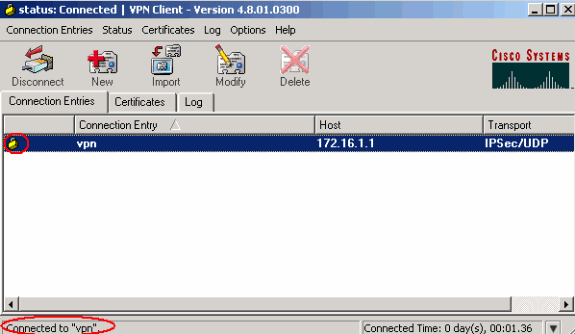See full list on cisco.com. Cisco Interfaces and Modules. Catalyst 6500 Series/7600 Series WebVPN Services Module. RVL200 4-Port SSL/IPsec VPN Router. Cisco VPN Clients.
Windows Platforms
The Shrew Soft VPN Client for Windows is an IPsec Remote Access VPN Client for Windows 2000, XP, Vista and Windows 7/8 operating systems ( 32 and 64 bit versions ). It was originally developed to provide secure communications between mobile Windows hosts and open source VPN gateways that utilize standards compliant software such as ipsec-tools, OpenSWAN, StrongSWAN, Libreswan, isakmpd. It now offers many of the advanced features only found in expensive commercial software and provides compatibility for VPN appliances produced by vendors such as Cisco, Juniper, Checkpoint, Fortinet, Netgear, Linksys, Zywall and many others.
Product Editions
The Shrew Soft VPN Client for Windows is available in two different editions, Standard and Professional. The Standard version provides a robust feature set that allows the user to connect to a wide range of open source and commercial gateways. It contains no trial period limits, nag screens or unrelated software bundles. It is simply free for both personal and commercial use. The Professional edition offers additional features that may be helpful for users connecting to a corporate LAN. It is installed by default with a 14 day evaluation period limit. To use the Professional edition after the evaluation period has expired, a client license may be purchased from the Shrew Soft Shop.
Screen Shots
Related Links
VPN Client Download
VPN Client Documentation
Windows 8 and newer easily support IKEv2 VPNs, and Windows 7 can as well thoughthe processes are slightly different. The procedure in this section wasperformed on Windows 10, but Windows 8 is nearly identical. The procedure toimport certificates to Windows 7 can be found on the strongSwan Wiki
Import the CA to the Client PC¶
Export the CA Certificate from pfSense® and download or copy it to the clientPC:
Navigate to System > Cert Manager, Certificate Authorities tab onpfSense
Click by the CA to download only the certificate
Locate the downloaded file on the client PC (e.g. VPNCA.crt) as seen in FigureDownloaded CA Certificate
Double click the CA file
Click Install Certificate… as shown inCertificate Properties
Certificate Properties¶
Select Local Machine as shown inCertificate Import Wizard - Store Location
Click Next
Click Yes at the UAC prompt if it appears
Select Place all Certificates in the following store as shown in FigureCertificate Import Wizard - Browse for the Store
Certificate Import Wizard - Browse for the Store¶
Click Browse
Click Trusted Root Certification Authorities as shown in FigureSelect Certificate Store
Click Next
Review the details, they should match those in FigureCompleting the Certificate Import Wizard
Completing the Certificate Import Wizard¶
Click Finish
Click OK
Click OK
Setup the VPN Connection¶
Once the certificate has been properly imported it is time to create the clientVPN connection. The exact steps will vary depending on the version of Windowsbeing used by the client, but will be close to the following procedure.
Open Network and Sharing Center on the client PC
Click Set up a new connection or network
Select Connect to a workplace
Click Next
Select No, create a new connection
Click Next
Click Use my Internet Connection (VPN)
Enter the IP address or hostname of the server into the Internet addressfield as shown in FigureWindows IKEv2 VPN Connection Setup Screen
Note
This must match what is in the server certificate Common Name or a configured Subject Alternative Name!
Enter a Destination Name to identify the connection
Click Create
The connection has been added but with several undesirable defaults. For examplethe type defaults to automatic. A few settings need to be set by hand firstto ensure a proper connection is made. Refer to FigureWindows IKEv2 VPN Connection Properties
In Network Connections / Adapter Settings in Windows, find theconnection created above Drivers google input devices.
Right click the connection
Click Properties
Click the Security tab
Set Type of VPN to IKEv2
Set Data Encryption to Require Encryption (disconnect if serverdeclines)
Set Authentication / Use Extensible Authentication Protocol to Microsoft:Secured password (EAP-MSCHAP v2) (encryption enabled)
Compare the values on the screen to those in FigureWindows IKEv2 VPN Connection Properties
Click OK
Windows IKEv2 VPN Connection Properties¶
The connection is now ready to use.

Disable EKU Check¶
When the CA and server certificates are made properly on pfSense 2.2.4 andlater, this is not necessary. Drivers film scanner wia vendor. If an improperly generated server certificate mustbe used for some reason, then the Extended Key Usage check may need to bedisabled on Windows. Disabling this check also disables validation of thecertificate’s common name and SAN fields, so it is potentially dangerous. Anycertificate from the same CA could be used for the server when this is disabled,so proceed with caution.
To disable the extended key usage checks, open up Registry Editor on the Windowsclient and navigate to the following location in the client registry:
In there, add a new DWORD entry named DisableIKENameEkuCheck and set itto 1.
A reboot may be required to activate the setting.
Advanced Windows IPsec settings¶
Cisco Ipsec Vpn Client
With Windows 10 PowerShell cmdlet Set-NetIPsecMainModeCryptoSet it is possible tochange various advanced settings, like IPsec lifetime:
IPsec VPN With Cisco Router: Configuration And Implementation
This example modifies the maximum IPsec SA lifetime for the “pfSense IPsec” connection.The default Windows IPsec lifetime is 4800 minutes (eight hours).


See also
For more information, see Windows 10 IPsec PowerShell cmdlets
